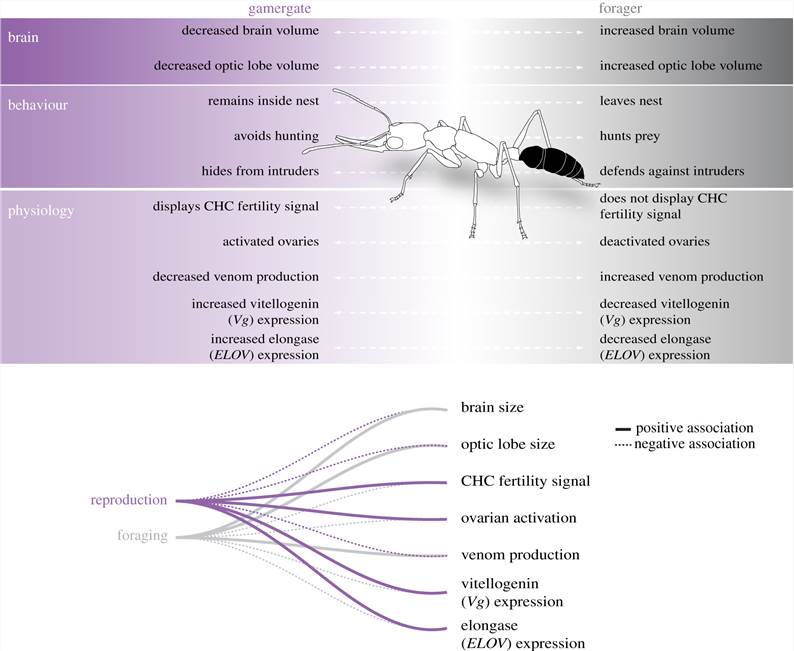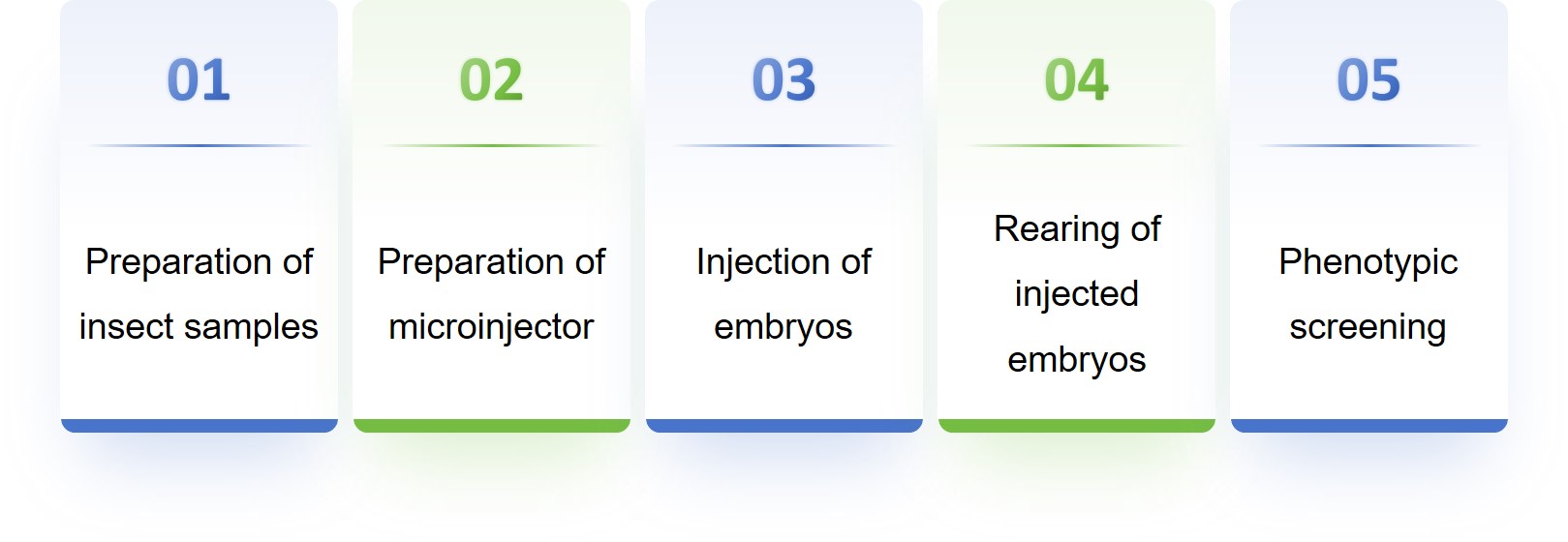Harpegnathos saltator was one of the first ant species to have a genetic sequence. Harpegnathos saltator is a very social insect that communicates with each other through pheromones emitted from their bodies. When the Harpegnathos saltator finds food, it spreads pheromones on the food, and other Harpegnathos saltator instinctively drag the pheromone-laden object back to the hole. When the Harpegnathos saltator dies, the pheromone remains on its body, and other Harpegnathos saltator are attracted to the pheromone when they pass by. In addition to the pheromones, each nest of Harpegnathos saltator has its specific identifying scent, and things with the same scent will not be attacked, which is the basis of how well Harpegnathos saltator from the same nest can work together.
 Figure 1. Correlated plasticity in brain, behavior, and physiology between reproductive and non-reproductive workers. (Clint, A. P., et al., 2021)
Figure 1. Correlated plasticity in brain, behavior, and physiology between reproductive and non-reproductive workers. (Clint, A. P., et al., 2021)
Social behavior and reproductive division of labor in social insects are controlled by their genetic system. Lifeasible through CRISPR/Cas9 technology can help you obtain a mutant Harpegnathos saltator to help you perform induced mutagenesis to analyze the physiology and social behavior of populations. It can also be applied to a wider range of Hymenoptera and other insects.
| Editable genes | Relevant traits exhibited after editing |
| orco | Ants exhibit cooperative social behavior dependent on pheromone-dependent chemical odors. The orco gene encodes a co-receptor for all odor receptors, and mutations in orco significantly affect Harpegnathos saltator's sense of smell and thus social communication. CRISPR-engineered mutations in the orco gene cause the Harpegnathos saltator to lose its sense of smell. Individuals with the orco mutation Harpegnathos saltator exhibit antisocial behaviors, such as not interacting with other ants in the colony, not foraging for food, and not exhibiting pre-mating grooming behaviors. |

In social insects, the Harpegnathos saltator is particularly well suited for establishing and maintaining mutant lines due to its unusual population plasticity. Lifeasible offers genome editing of orco loci based on CRISPR/Cas9 technology can help you obtain loss-of-function mutations and propagate them through Harpegnathos saltator's germline. Please feel free to contact us to customize a mutation protocol for the target gene you are interested in.